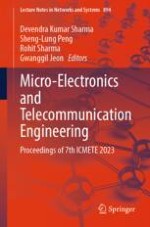2024 | OriginalPaper | Buchkapitel
Experiment to Find Out Suitable Machine Learning Algorithm for Enzyme Subclass Classification
verfasst von : Amitav Saran, Partha Sarathi Ghosh, Umasankar Das, Thiyagarajan Chenga Kalvinathan
Erschienen in: Micro-Electronics and Telecommunication Engineering
Verlag: Springer Nature Singapore
Aktivieren Sie unsere intelligente Suche, um passende Fachinhalte oder Patente zu finden.
Wählen Sie Textabschnitte aus um mit Künstlicher Intelligenz passenden Patente zu finden. powered by
Markieren Sie Textabschnitte, um KI-gestützt weitere passende Inhalte zu finden. powered by
